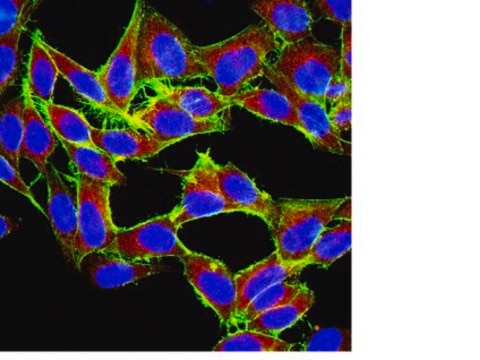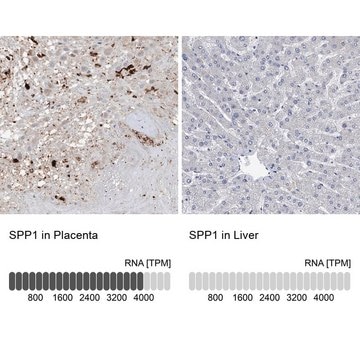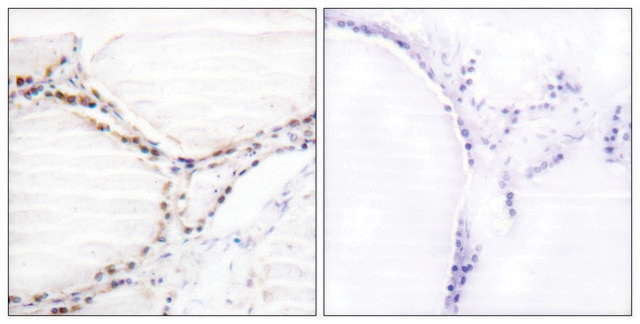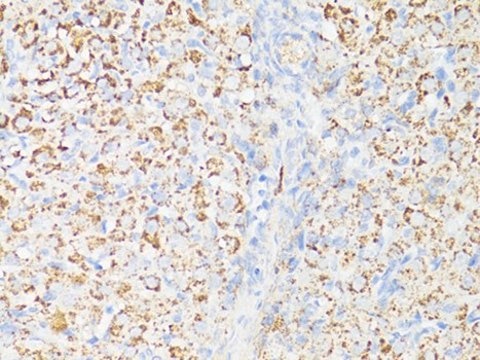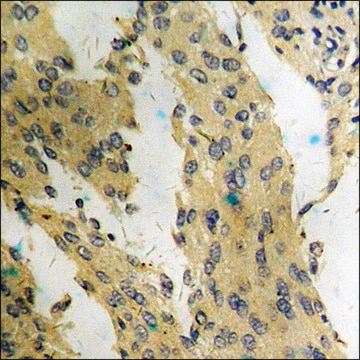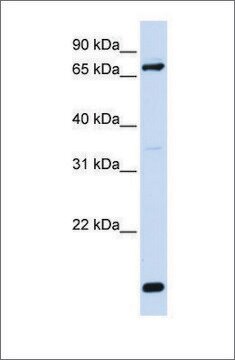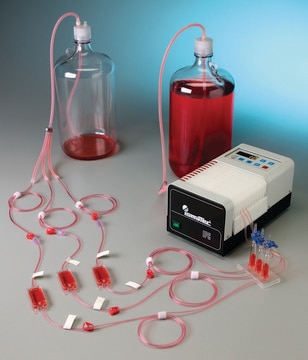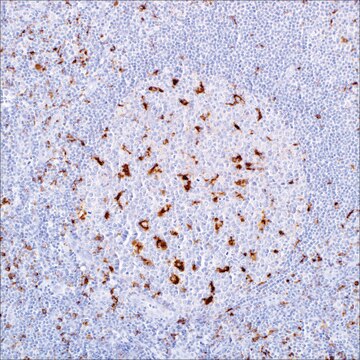GR37
Anti-Vitamin D Receptor (Ab-1) Rat mAb (9A7γE10.4)
liquid, clone 9A7γE10.4, Calbiochem®
About This Item
Recommended Products
biological source
rat
Quality Level
antibody form
purified antibody
antibody product type
primary antibodies
clone
9A7γE10.4, monoclonal
form
liquid
contains
≤0.1% sodium azide as preservative
species reactivity
chicken, hamster, mouse, porcine, rat, amphibian, human
manufacturer/tradename
Calbiochem®
storage condition
OK to freeze
avoid repeated freeze/thaw cycles
isotype
IgG1
shipped in
wet ice
storage temp.
2-8°C
target post-translational modification
unmodified
Gene Information
human ... VDR(7421)
General description
Immunogen
Application
Gel Shift (see comments)
Immunoblotting (1:200-1:400)
Immunoprecipitation (10 µl/mg protein lysate)
Paraffin Sections (1:50-1:100, sample pre-treatment required, see comments)
Packaging
Warning
Analysis Note
Breast carcinoma tissue (see comments)
Other Notes
Fleet, J.C. 1999. Nutr. Rev.57 60.
Evans, S.R., et al. 1998. Clin. Cancer Res.4, 1591.
Friedrich, M., et al. 1998. J. Histochem. Cytochem.46, 1335.
Issa, L.L., et al. 1998. Inflamm. Res.47, 451.
Kivineva, M., et al. 1998. J. Steroid Biochem. Mol. Biol.66, 121.
Nangia, A.K., et al. 1998. J. Steroid Biochem. Mol. Biol.66, 241.
Legal Information
Not finding the right product?
Try our Product Selector Tool.
wgk_germany
WGK 1
flash_point_f
Not applicable
flash_point_c
Not applicable
Certificates of Analysis (COA)
Search for Certificates of Analysis (COA) by entering the products Lot/Batch Number. Lot and Batch Numbers can be found on a product’s label following the words ‘Lot’ or ‘Batch’.
Already Own This Product?
Find documentation for the products that you have recently purchased in the Document Library.
Our team of scientists has experience in all areas of research including Life Science, Material Science, Chemical Synthesis, Chromatography, Analytical and many others.
Contact Technical Service
